Today, something a little different. I have been interviewed by Marie Gilles, artist and author of the French blog La Lune Mauve. We have been working together over the course of several months in order to offer you an interview as complete and unique as possible. It was finally published last December, just in time to celebrate the Winter Solstice.
You can read the original article and admire the impeccable lay-out on Marie’s blog: read the interview in French.
But fear not, if you do not read French, as I just finished translating this – long – interview into English!

– La Lune Mauve bespoke talisman –
✵
INTERVIEW TRANSLATION BELOW
Marie : On this winter solstice, I have the joy of sharing with you the interview of Mathyld, a self-taught French artisan who creates silver jewellery as mysterious as it is delicate behind the brand under the pyramids.

– Marie Gilles’ tribute to under the pyramids. Inspired by W. Heath Robinson –
Marie : Mathyld’s dark, symbolic and poetic universe captivates me. I love her esoteric jewellery, handmade in Paris with recycled silver, as much as the photographs that highlight these true amulets, recognisable among thousands.
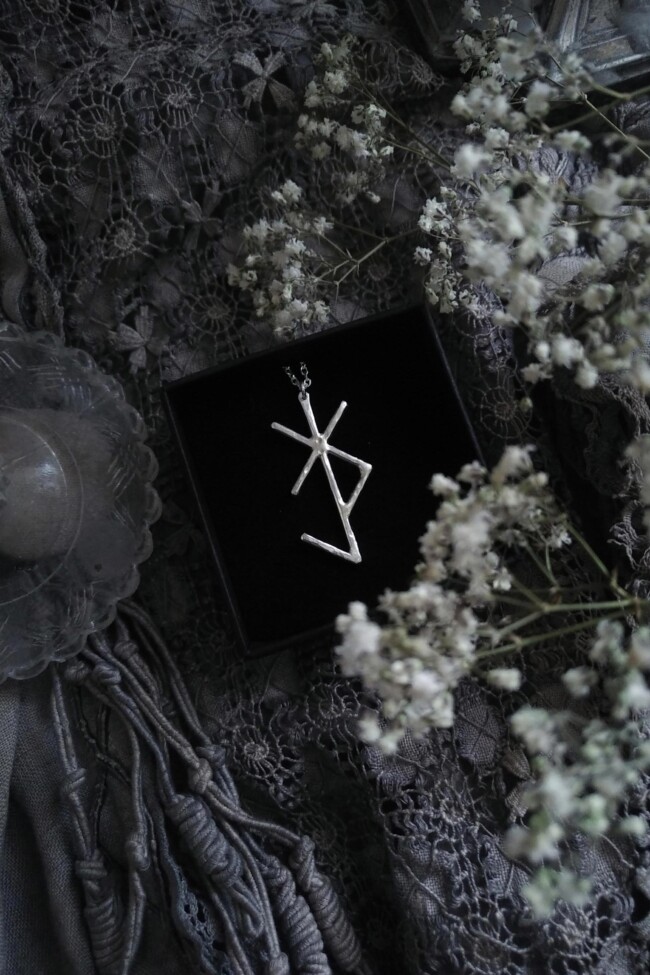
– Bespoke Nornir Talisman (Custom Bind-Rune) –
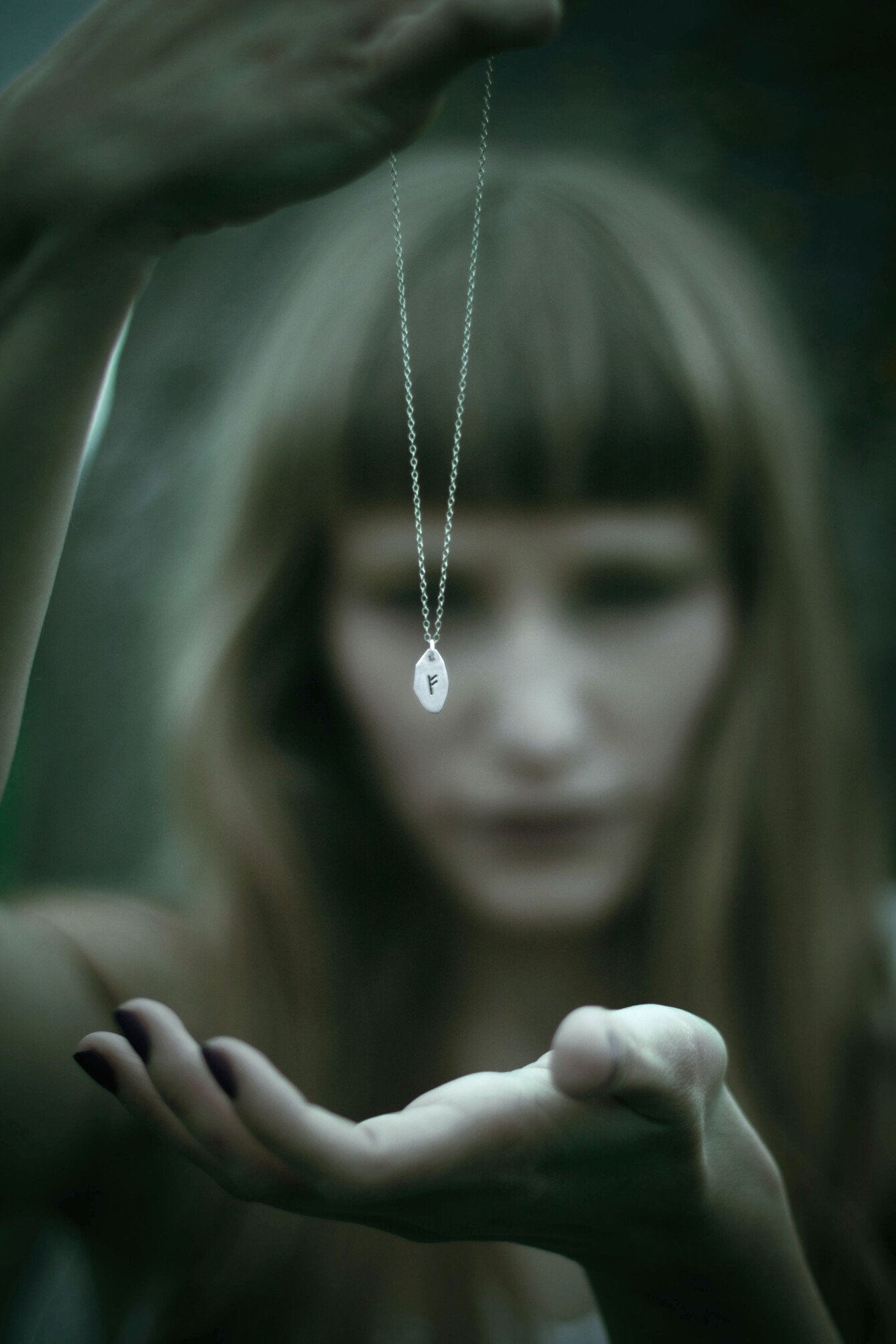
– Photo: Helena Aguilar Mayans. Model: G. and a Runic amulet –
✷ Marie : Bonjour Mathyld! To begin, can you tell us how you learned to create jewels?
Already as a child, I have always been attracted by silver jewels, and craftsmanship in general. For 8 years I followed courses in Engraving (mainly Etching), Bookbinding and Comics as well as Art-History at university, then evening courses in historical costume sewing and stained-glass. Jewellery intimidated me a lot, but it finally became an evidence.
I have long wanted to craft objects that would help people, because, yes, I do believe that jewels can help. Something portable, precious, unique, but also and above all objects that can be worn by any type of person and imbued with an energy that I hope is beneficial.

– Photo: Ampelopsis. Model: Mathyld
and her Runic amulet, earrings & solitaire, Seidr Sól talisman
with Shízhánee’ & Pyramid rings (not sold) –
I started in 2010. At the time I was friends with a jeweller named Minicyn. She taught me the basics — sawing and welding — in half a dozen lessons. She is someone with impeccable work, which was very important to me.
From there, I just continued to expand on what I knew and started experimenting, taking risks. Unique and personalised designs are amazing for this because this type of design helps push boundaries and step out of our comfort zone.
✷ Marie : Why did you choose the name “under the pyramids”? This name evokes Lovecraft’s fantastic literature, but is there perhaps another, more personal, meaning that you could reveal?
When I decided to start crafting jewellery, I was looking for a name… One evening, I have no idea why, but my best friend Christian and I were looking at a list of H.P. Lovecraft’s writings. And suddenly, as if it were obvious, “under the pyramids” appeared.
I knew immediately. This name speaks of everything that fascinates me: the mysterious, the hidden, the legendary, lost civilisations… While doing research, I discovered that this text was at the time published in Weird Tales [cheap American magazine which published fantastic stories and short stories, Editor’s note], signed with the name of another person who fascinates me: Harry Houdini. One more sign.
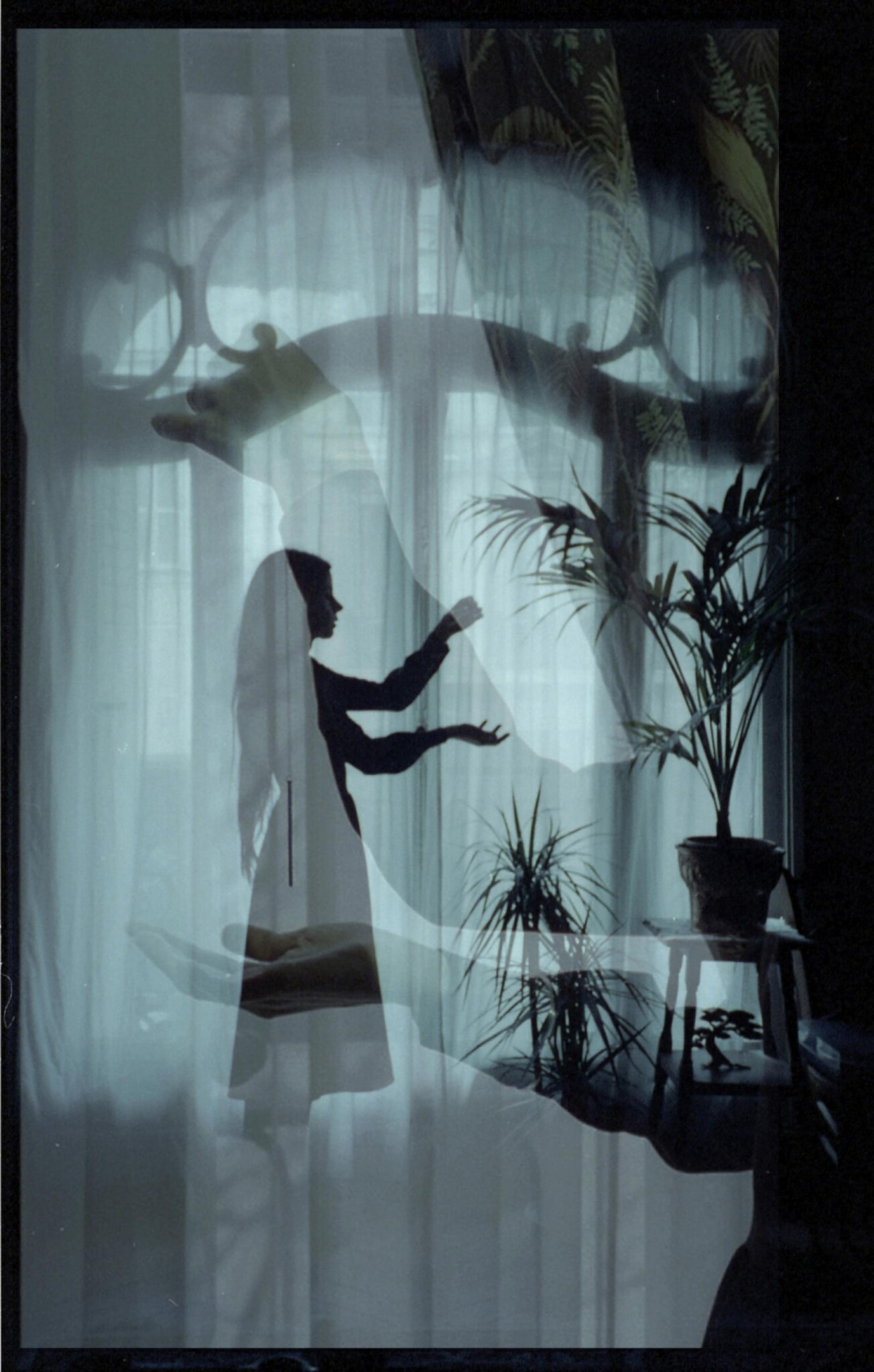
– Collage made with two analogue photos by Caroll Nox Atra
Model: Mathyld and her Fleur de Poussière pendulum –
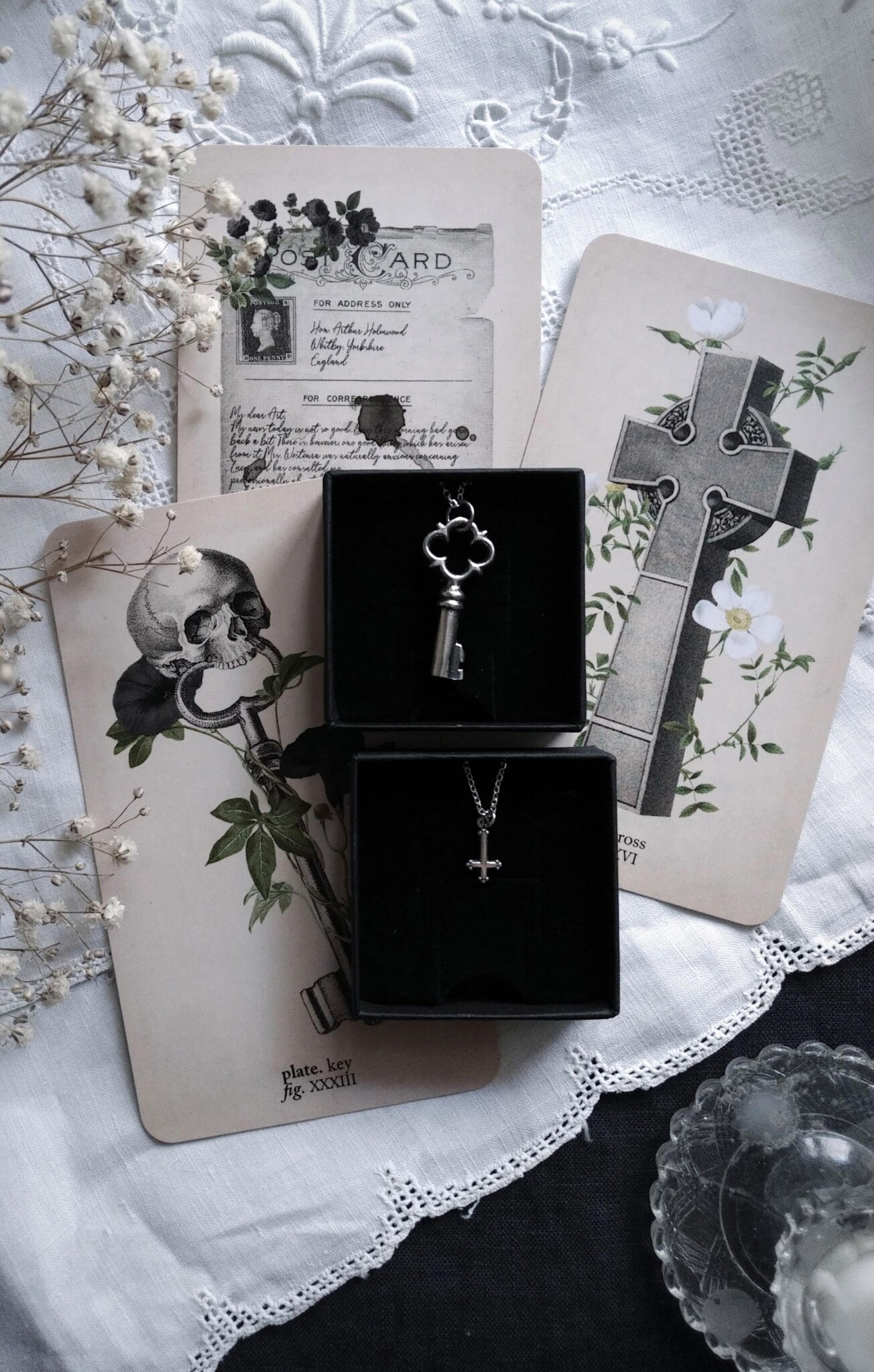
– Jewels: La Clef d’Argent and Irom Otnemem
Oracle: Claire Goodchild –
Regarding Lovecraft, The Case of Charles Dexter Ward is one of my favorite books, but I had never read anything else by Lovecraft.
To be honest, the rest isn’t necessarily my cup of tea; I have also since learned that Lovecraft was deeply racist, which is clearly problematic.
But for me, the name “under the pyramids” is now its own entity, and I no longer think of Lovecraft at all when I say it. I hope to instill values of respect and tolerance to it.
✷ Marie : You mix silver with mysterious designs, which borrow from magic, runes and alchemy. You describe your creations as “Portable Magick” and present them as real talismans and amulets. How can the under the pyramids jewels help, or transform, the people who wear them?
As per the choice of Silver, this too was obvious. It is a metal that I have always loved, which has always attracted me. And one of my favourite authors, Graham Masterton, said it perfectly:
Silver is a lunar metal, associated with the unconscious […] The purity of silver and its connection with the Moon made it the perfect metal for the making of talismans and amulets. Excerpt from “Darkroom”.
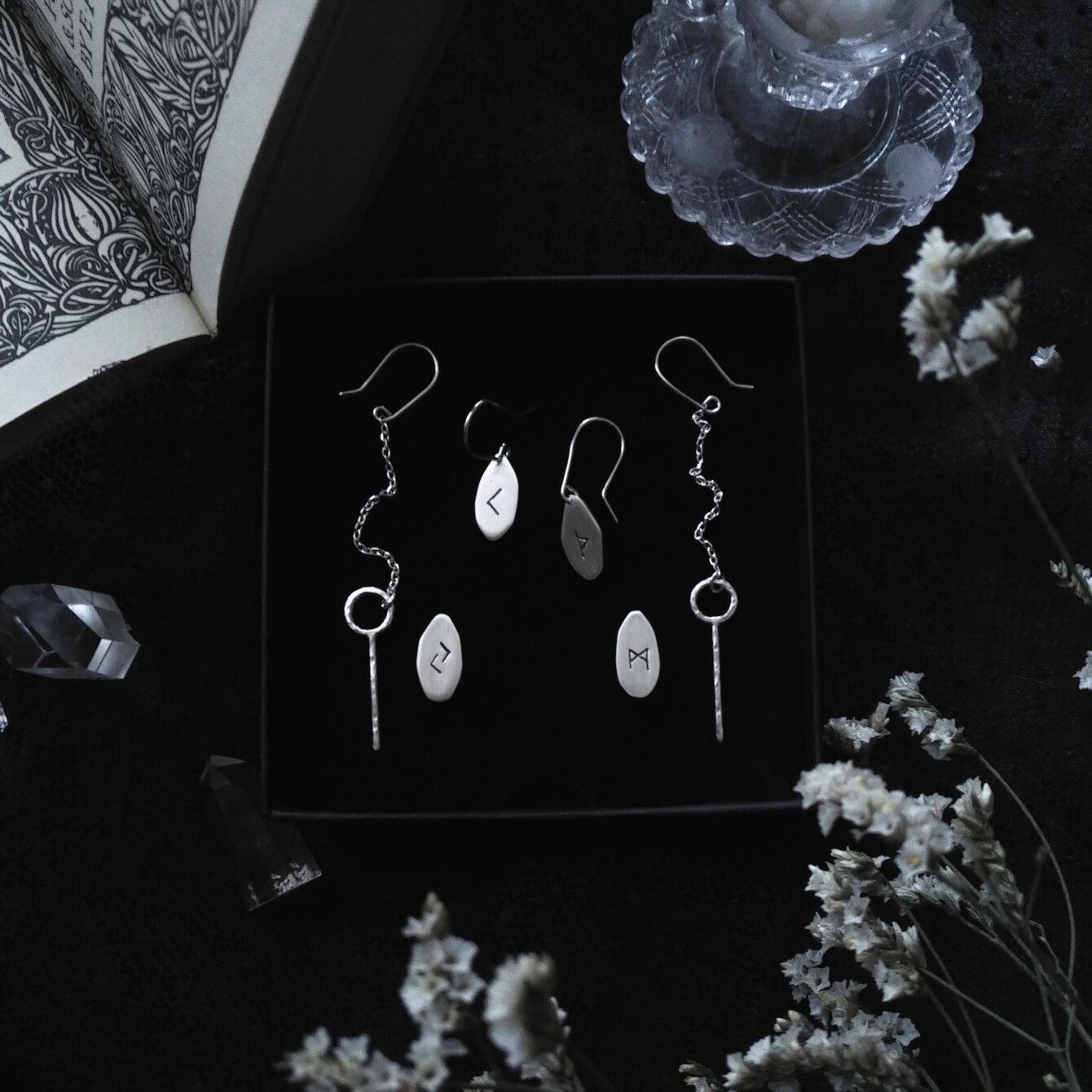
– Runic drop earrings (Kenaz & Thurisaz), Runic ear-studs (Jera & Mannaz),
Sól Seidr earrings (Medieval Rune of Healing & Magick) –
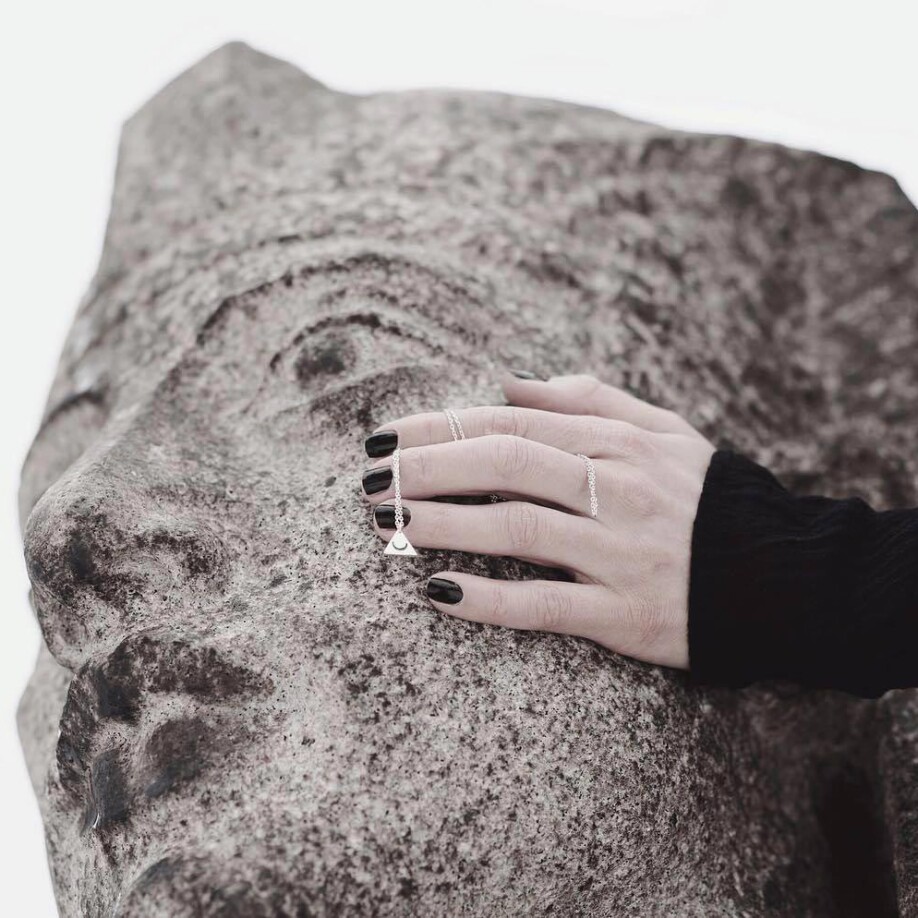
– Photo: Rebecka Bjurmell
Model: Johanna Bjurmell & a Pyramid amulet (old collection) –
The magical element is also important. As aforementioned, I am captivated by lost civilisations. In the same way, esoteric symbols as well as so-called dead languages and alphabets that have fallen into disuse or “secret” ones such as the Runes, the Ogham or even the Litterae Ignotae, among many others, exert a real fascination on me. This is why, when I was younger, I wanted to learn ancient Greek.
As for helping people through my jewels, I’m not sure I can explain it. What I know is that it comes from a deep desire to help.
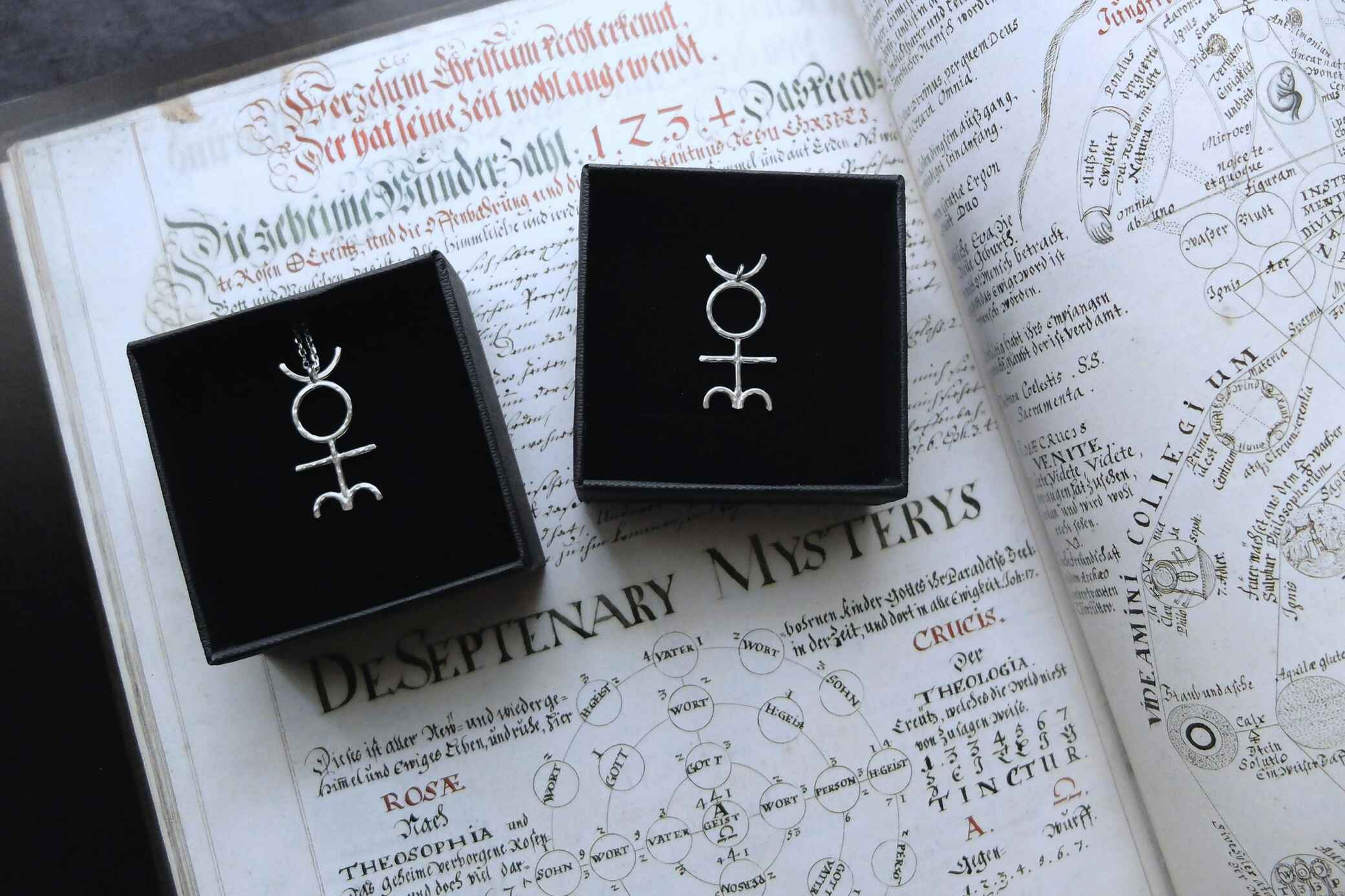
What I can talk about, however, is my process: I am always delighted to help people in their choice, to support them, advise them, enlighten them as to the symbolism of the numerous pieces that I offer, because I realise that it can be intimidating or just too time-consuming to try and navigate these.
I am also extremely open to creating unique pieces, inspired by the needs and desires of the person for whom they are intended. I like to feed on the words and ideas that are proposed to me in order to conjure a piece of jewellery — or a magick kit — together that will respond to the problematic that was presented to me.
The latter is sometimes extremely concise; other times I am offered an incredibly specific and detailed description. Still other times, it is a much more vague and vast idea… The person may then wish to dialogue, to exchange. This sometimes takes a lot of time, but this is what ensures that the connection will be truly profound between the person and their jewel. And that is what matters most to me.
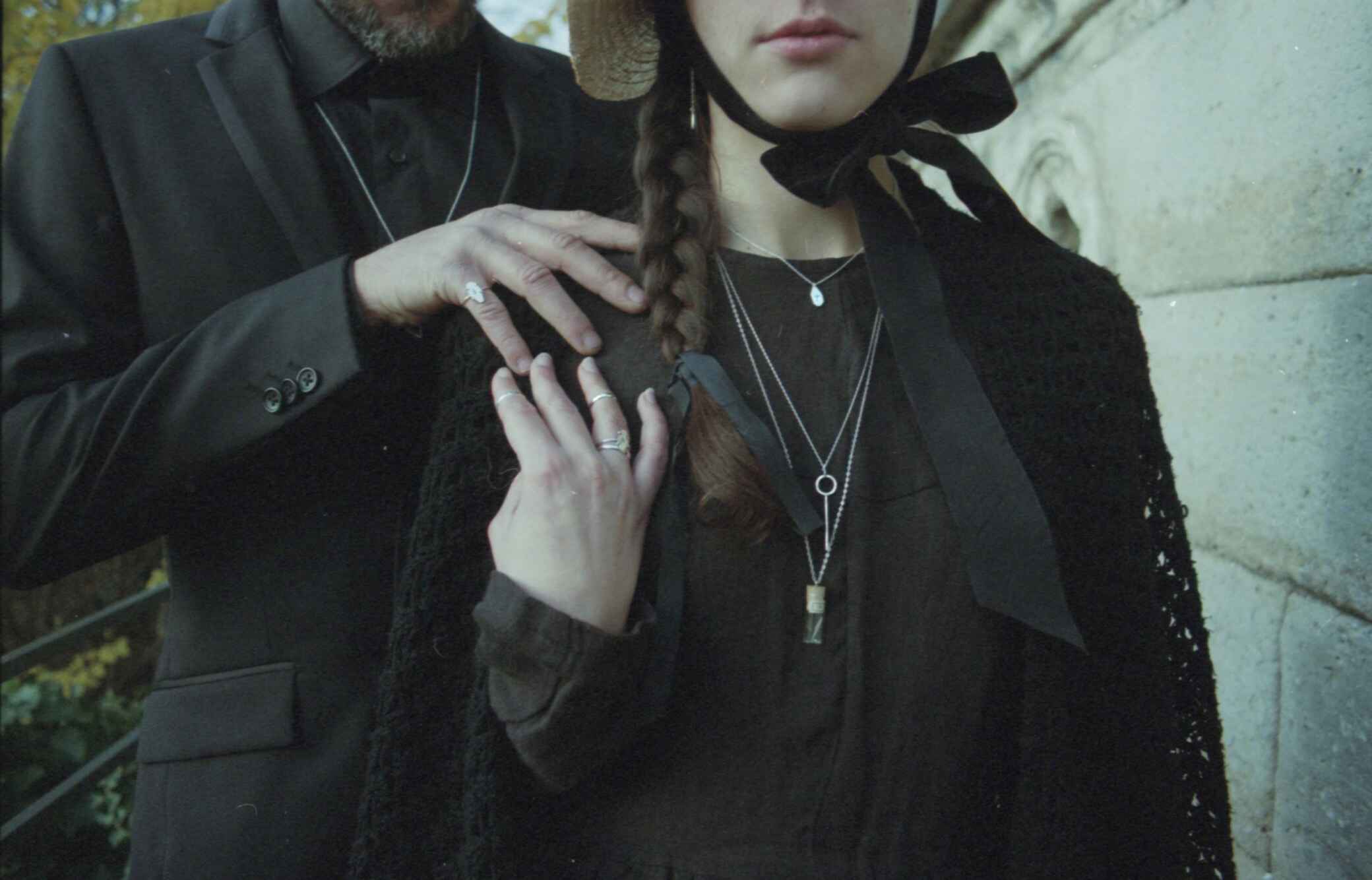
– Photo: Helena Aguilar Mayans
Models: Charles M. with a Vördr talisman & Runic solitaire
and Amaya Amasia with a Runic amulet, earrings & solitaire,
Seidr Sól talisman, Shízhánee’ rings & Lepideptora Vial(past collection) –
It is not uncommon for me to receive some pretty incredible testimonials following the adoption of a piece of jewellery or a magick kit.
One of the things that comes up most often is no longer willing to go out without it, or the need to wear it to every important events. Many people tell me they feel a real connection with their jewel, and nothing could make me happier! It’s an incredible honor to know that you’re helping someone feel stronger, more confident.
As an extremely anxious person myself, I am very well placed to understand the importance of a gri-gri, a lucky charm. And what could be more evident than a piece of jewellery, in order to always have it with you?
For those who don’t wear jewels, I also create all kinds of (trans)portable magick kits discreetly housed in sturdy black boxes.
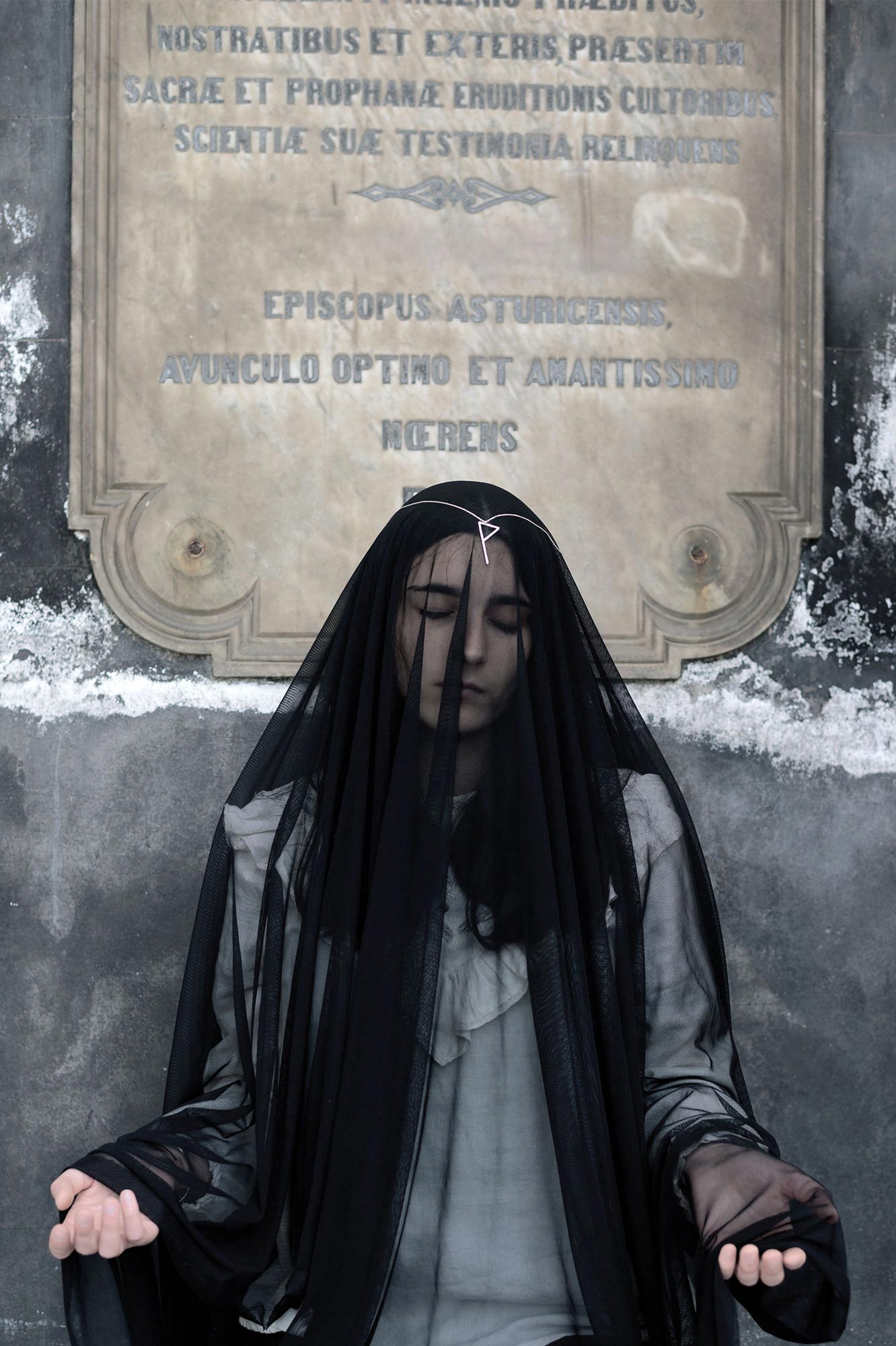
– Photo: Ari Tinieblas. Model: Sofía V. Paura and a Wunjo Vördr talisman –
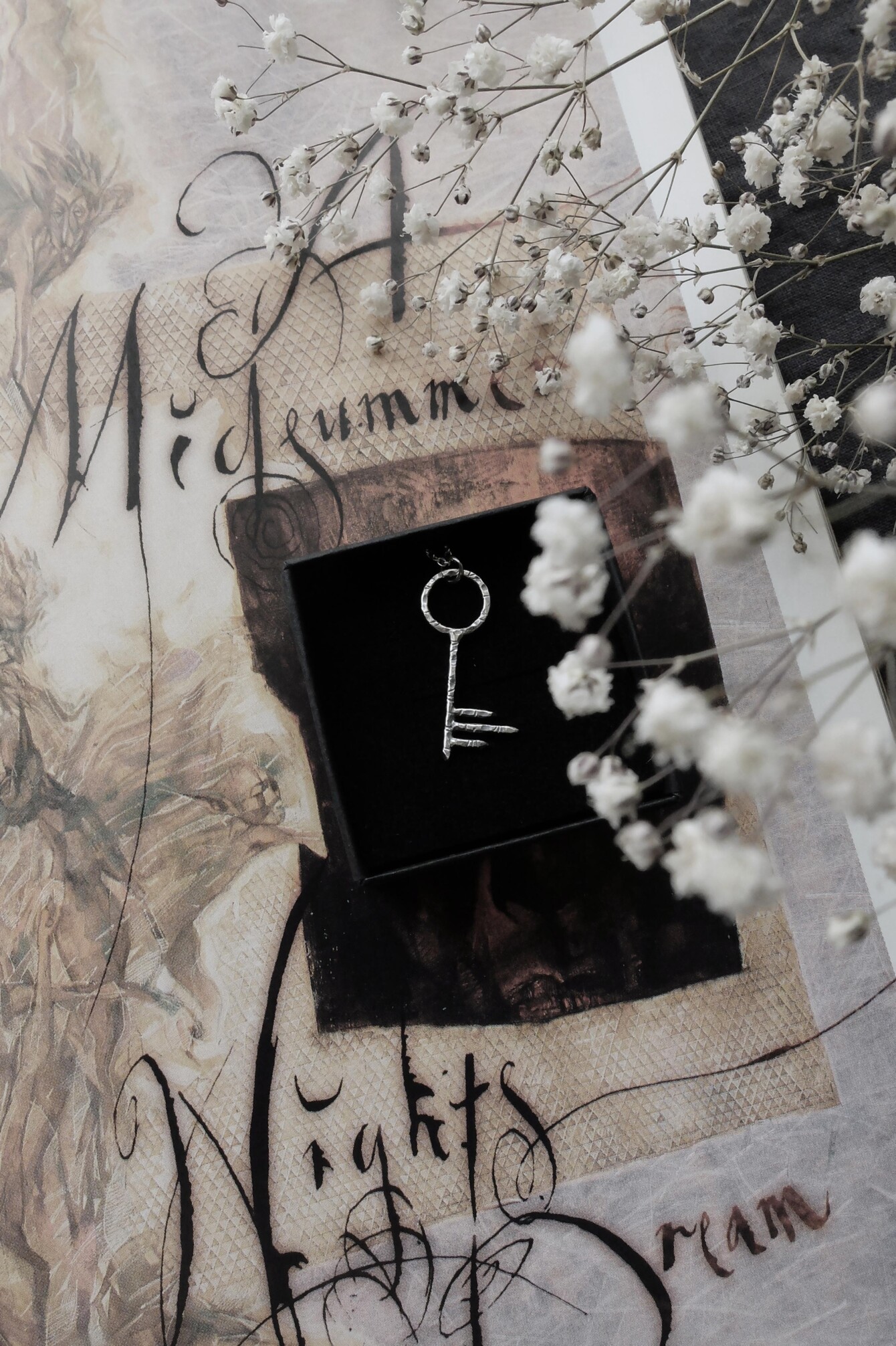
– Key to Hell talisman
Cover for Neil Gaiman‘s Sandman by Dave McKean –
✷ Marie : What are the main steps you go through to create a piece of jewellery from A to Z? Does drawing play a role in your creative process for under the pyramids? Which stage do you prefer?
I always start with a very simple drawing which I then reproduce in full-size and which I follow in order to create the piece of jewellery. What I prefer is working directly with metal. This allows one to obtain unique pieces, and each time a little different. 95% of my pieces are created this way.
I enjoy all stages of working with silver: sawing, cutting, filing, hammering, oxidising and even sanding. But what I like most is welding. This is where the magic happens, for me.
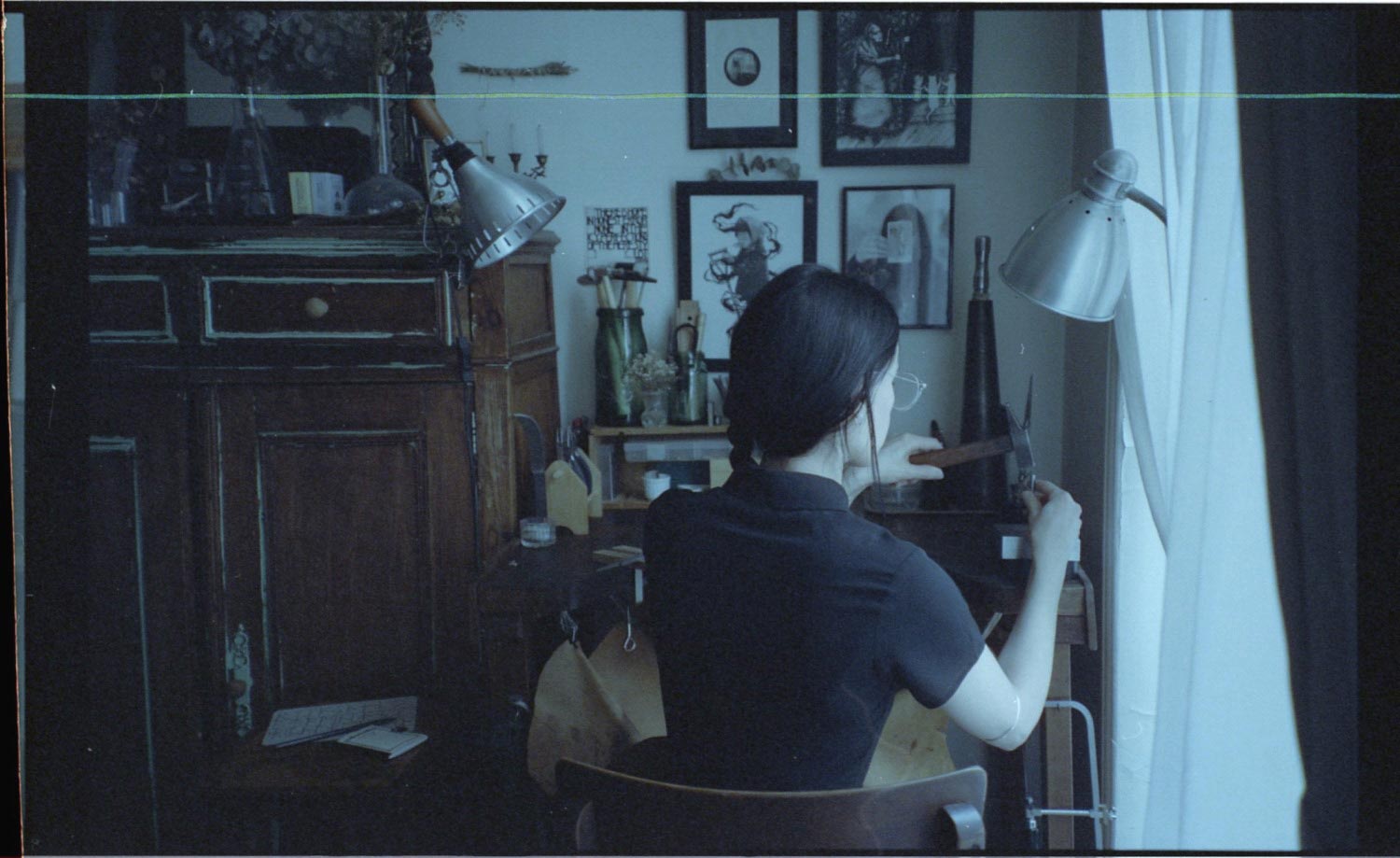
– Mathyld in her atelier. Photo: Caroll Nox Atra –
The technique most used by jewellery designers is generally lost wax. We begin by creating a wax model (or by casting an object to create a wax copy or a mould), which will then be reproduced in silver. But this process appeals to me much less. I don’t connect with wax at all… One day, maybe.
✷ Marie : If I wanted to learn how to make my own silver jewels, where do you think I should start? Is this possible in a self-taught way?
There are a lot of extremely well-made video tutorials on YouTube, including At the Bench. I learned some really good tips there. Otherwise, as with everything else: practice. You have to dare to get started… And not stop.
The basic equipment is very accessible: a blow-torch, a file, pliers, a jeweller’s saw and you can start creating! For metal, you can of course start with a less expensive metal and, quite simply, start with very small quantities.

– Sól Seidr (Medieval Rune of Healing & Magick), Nornir (Bind-Runes: Love & Custom)
and Vördr (Laguz Rune) talismans –
✷ Marie : What are the three pieces of advice you wish someone had given you when you were starting out in this field?
To tell the truth, the only thing that comes to mind is the “motto” that I gave myself when creating under the pyramids and to which I have stuck ever since: “Only create and offer pieces that I am proud of”.
And, of course, the famous quote by William Morris:
If you want a golden rule that will fit everything, this is it: Have nothing in your houses that you do not know to be useful or believe to be beautiful.
And finally, the only advice: don’t let yourself be discouraged, because the craft world can turn out to be a real cut-throat as soon as you get off the beaten tracks – and these are very narrow.

– Self-portrait by Jonas Ortner with his personalised Nornir talisman –
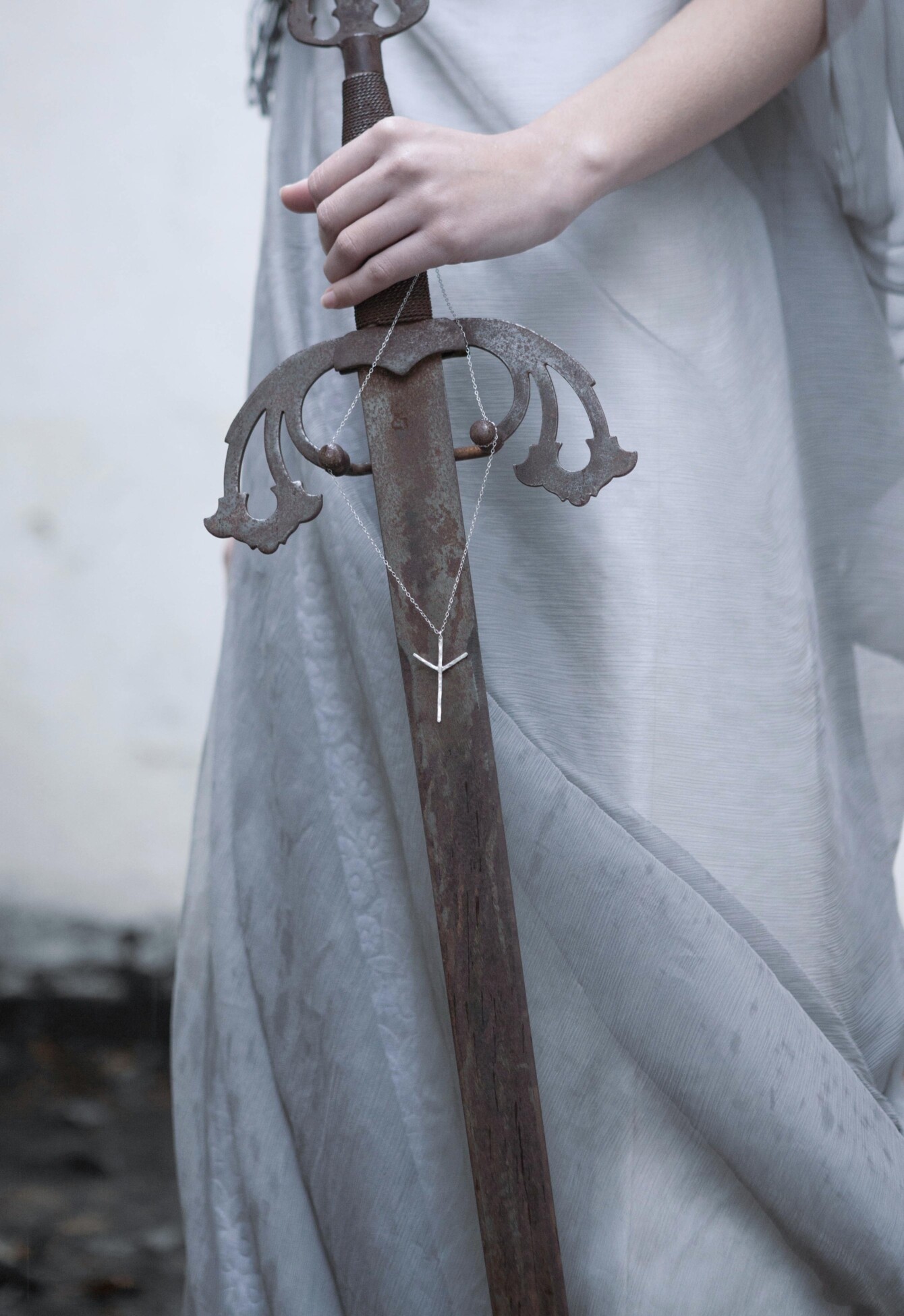
– Photo: María José Garcia
Model N. and a Vördr Algiz talisman –
✷ Marie : You have collaborated with several musicians, including King Dude, Spectral Wound and Sylvaine. These collaborations resulted in the creation of unique jewellery, inspired by their musical and visual universes, but always fitting with your under the pyramids style. What role does music play in your artistic process?
To be honest, if music was one of the pillars of my life until about ten years ago, I listen to it less and less today. However, King Dude and Spectral Wound are definitely among the artists I listen to regularly! They are also friends, which was ideal for my first collaborations.
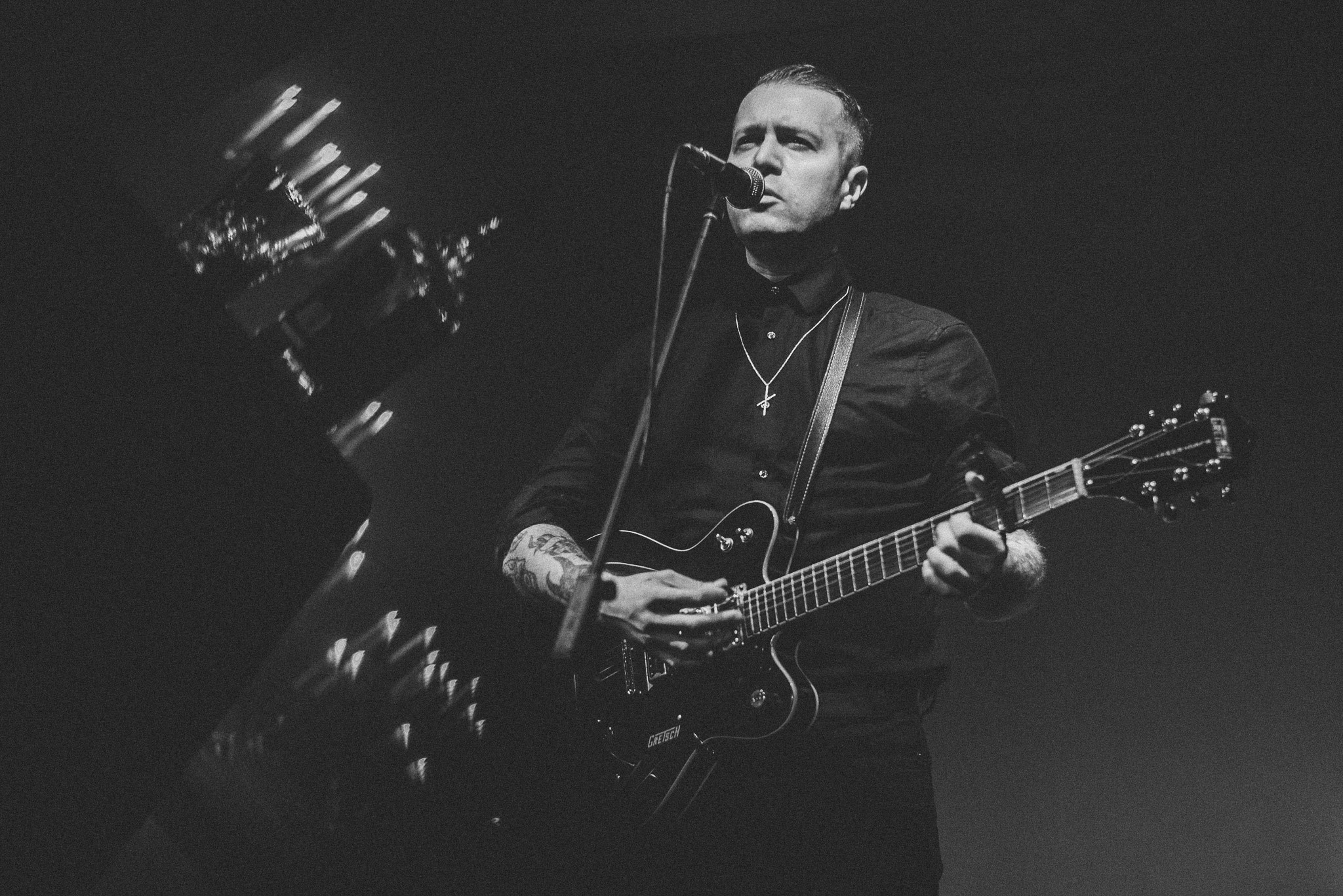
– Photo: Sutemose. Model: King Dude and his Vördr Nauthiz talisman –
Regarding Sylvaine, my photographer friend Helena Aguilar Mayans offered me to lend her some jewels for a serie of analogue photos featuring the singer and songwriter Kathrine in different abandoned places. This opportunity gave birth to powerfully romantic images.

– Photo: Helena Aguilar Mayans. Model: Kathrine Shepard / Sylvaine
with a Passe-Partout & Seidr Sól talismans
Dress: Amentia –
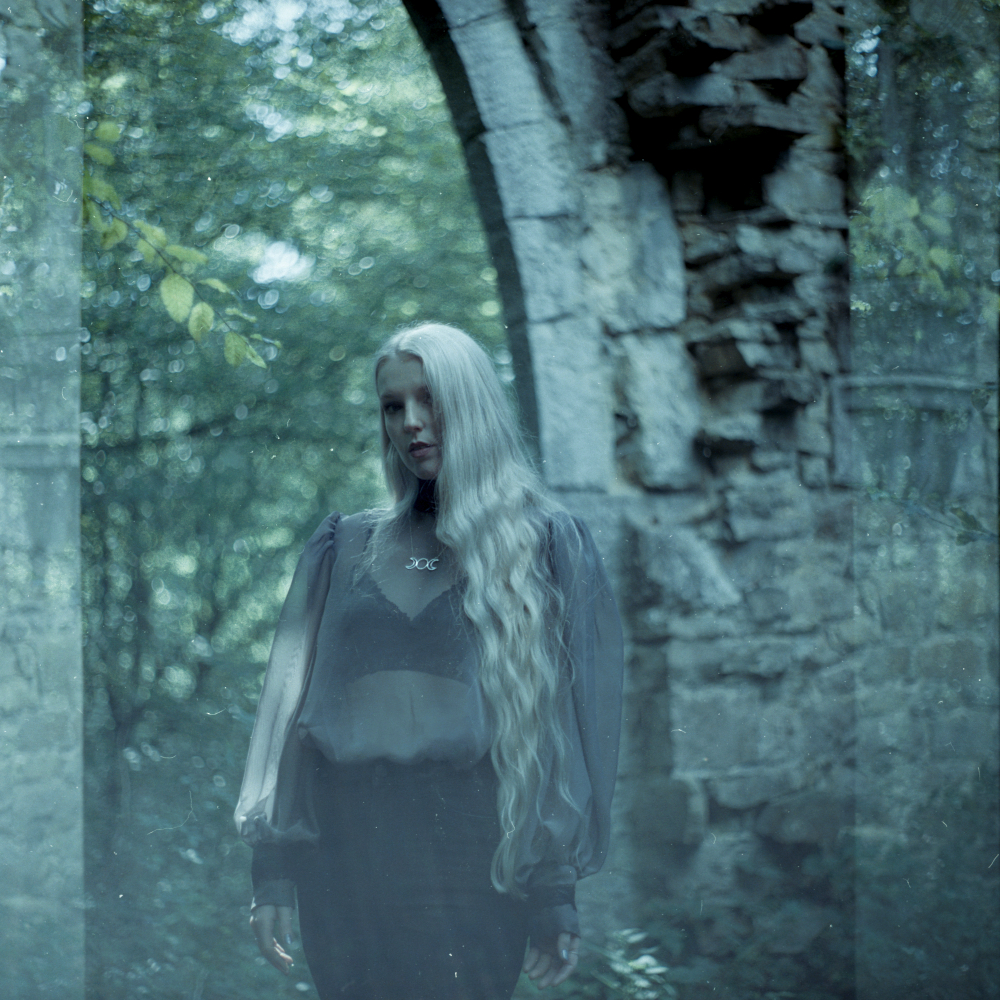
– Photo: Helena Aguilar Mayans. Model: Kathrine Shepard / Sylvaine
with a Mini Esbat talisman
Blouse: Amentia –
✷ Marie : Brittany (La Bretagne) plays an important role for you; It seems to me that you often stay in Northern Finistère. What do you like so much about Brittany? What role does Brittany play in your inspiration and your creations?
I actually go regularly to the Baie de Morlaix where I feel at home. The rocks, the changing colours of the Ocean, the walks along the Sentiers des Douaniers and the very name of “Finistère” (which can be translated by “The End of the Earth”) make me dream.

– Photo: Gwendolinoleum. Model: Mathyld & her Sól Seidr –
Brittany attracts me in a profound way. First of all by its wild and powerful landscapes, but also because of its history, its connection with magic, legends, the relationship with death which I find much more significant there than than anywhere else…
And then, of course, there are the megaliths. My very first jewels — the Runic amulets — were directly inspired by the shape of Menhirs.
As for inspiration in general, I don’t know if Brittany really plays a role in it, but it is certain that each stay in its premises recharges my batteries.
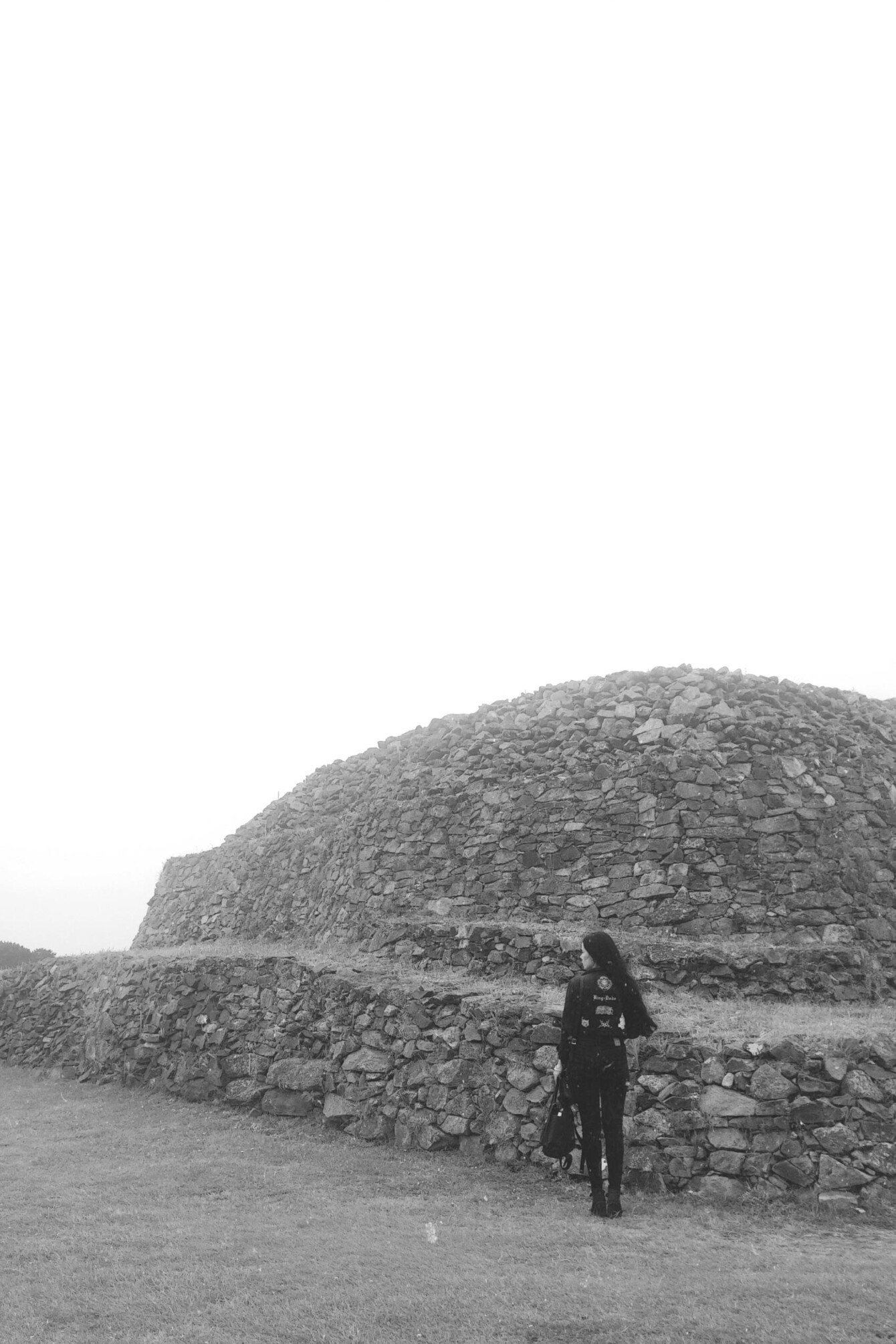
– Next to the Grand Cairn de Barnenez.
Photo: Gwendolinoleum. Model: Mathyld –
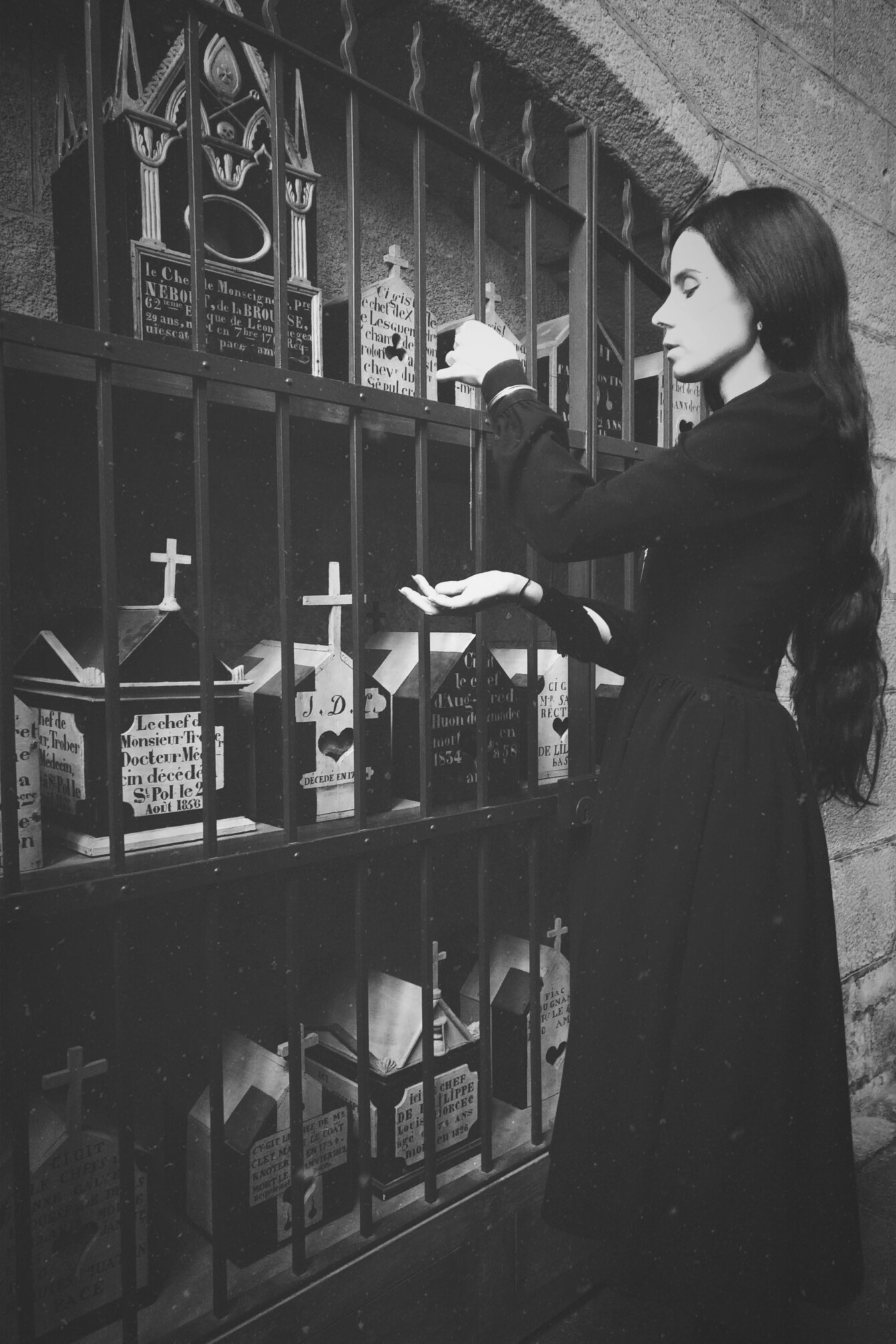
– Next to the boîtes à crâne, in Saint-Pol-de-Léon.
Photo: Gwendolinoleum. Model: Mathyld & her Fleur de Poussière pendulum –
✷ Marie : Which French-speaking artists or artisans do you recommend the work of to people who appreciate La Lune Mauve?
There are so many!
- First of all my husband, Jef/Gwendolinoleum for his intriguing illustrations, sometimes realistic, sometimes oniric;
- Aurélie/Ampelopsis for her photographic still-lifes worthy of the Flemish Masters;
- Pauline Darley for her photos and the mysteries she tells so well;
- Diane Schuh for her exploration combining musical composition and landscape design;
- Löu/La Serre Noire for their poetic embroideries;
- Lola/Les.Nuances.Fauves for her approach to basket weaving mixing folklore and legends;
- Maxime Massole for his hand-drawn decorative motifs;
- Melchior Tersen for his analogue photographs where collections and obsessions become poetic;
- Caroll Nox Atra for her analogue photographs and miniature drawings;
- Adalinh/The Hermit Witch Mama for her divinatory consultations, particularly with the late beloved;
- Katia/Queendomancie for her inclusive guidances.
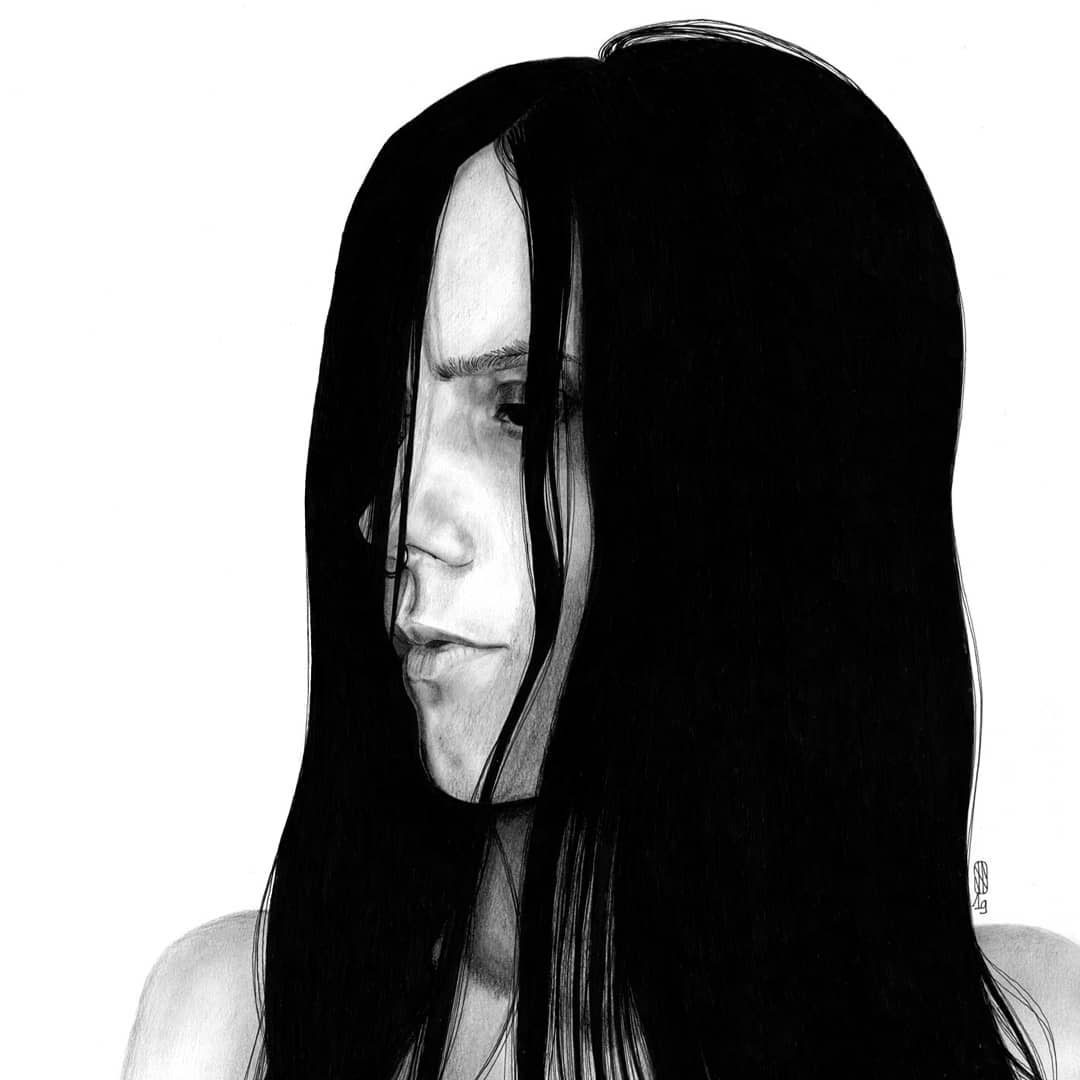
– Drawing by Gwendolinoleum –

– Photo: Caroll Nox Atra.
Model: Mathyld with Runic amulet & her Vördr Algiz talisman –
✵
La Lune Mauve x under the pyramids necklace
Marie : I hope you enjoyed this interview! I sincerely thank Mathyld, as well as all the artists who accepted the publication of their photos, drawings and faces in this post.
To compensate for the time Mathyld spent answering my questions and gathering the photos that illustrate it, I wanted to support her work by ordering a bespoke under the pyramids piece.
From this collaboration was born a sublime “Lunemauvian” necklace, made up of the current La Lune Mauve logo: a triangle, surrounded on each side by two crescent moons. I’m actually wearing it as I finish writing these lines…
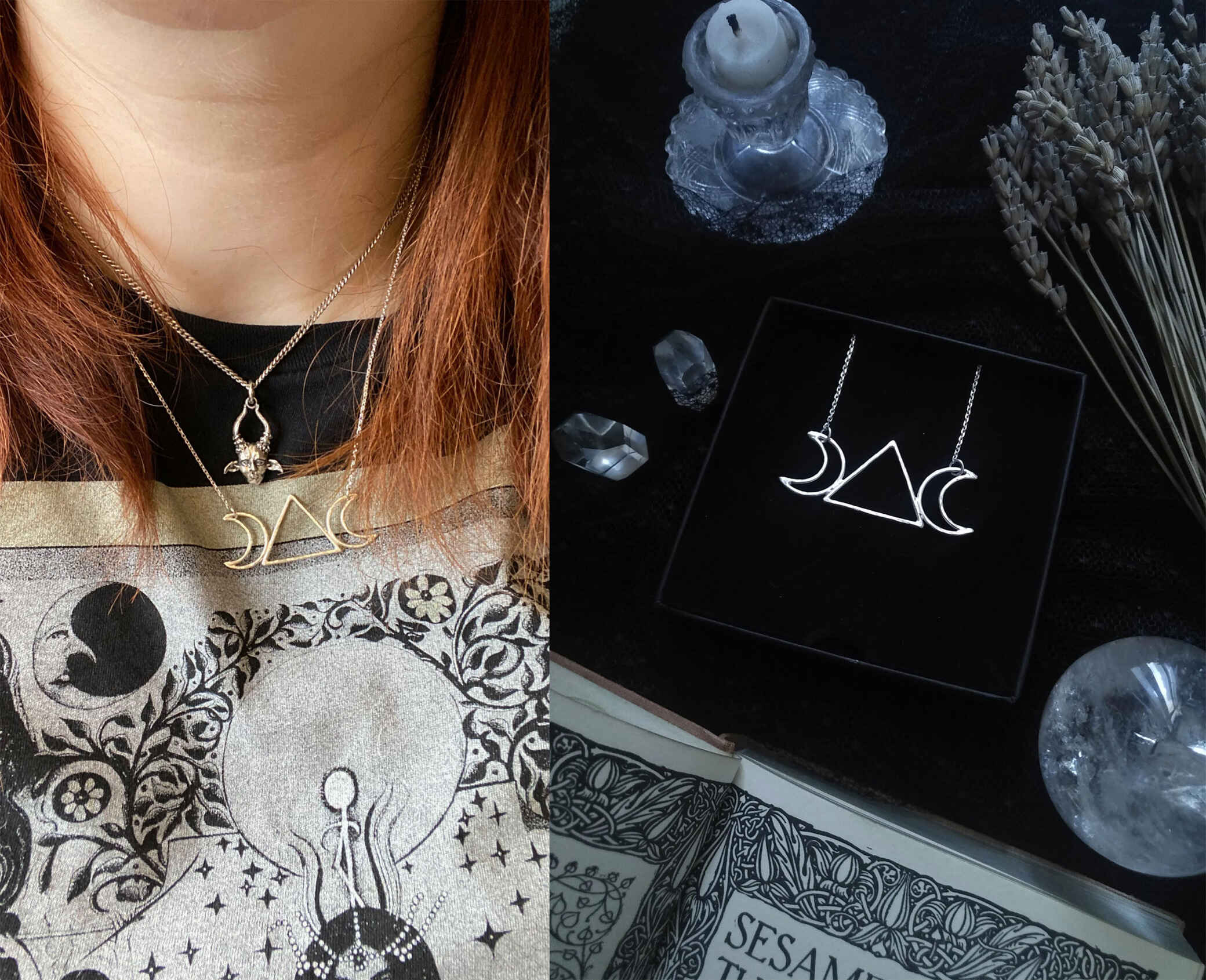
– La Lune Mauve necklace crafted by Mathyld (under the pyramids), one-of-a-kind.
The second necklace is by Kirsty McQueen (Others Are), another crafter I discovered thanks to Christelle Diale.
The T-shirt is illustrated by Jas Helena for Emma Ruth Rundle and was a present from La Nébuleuse –
✵
If you too would like to order a custom piece from Mathyld, it couldn’t be simpler: simply contact her to tell her about your project.
You can also support her work by adopting one of the wonderful alternative sterling silver jewellery pieces that she designs and crafts in her Parisian atelier.
Finally, you can follow Mathyld on Instagram and on her blog.
More interviews to come?
Marie : This interview is, I hope, the first in a serie aimed at promoting the work of French-speaking artists, artisans, creators, who oscillate in alternative spheres, that is to say in the direction opposite of the “mainstream”.
I want to make their creations known, their sources of inspiration and their approach, but also their journey and the difficulties encountered along the way.
What interests me is to show the variety of profiles and career paths in the field of art and crafts, to demonstrate that you do not necessarily have to have completed dedicated studies, and that there is room for extraordinary universes.
At the same time, lots of other things are simmering in the big Lunemauvian pot, and everything will come in due time.
Thank you for reading us, until next time!
